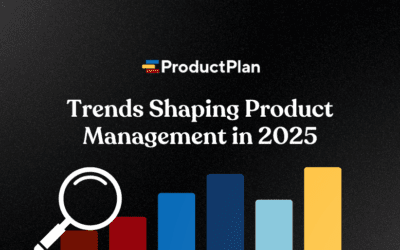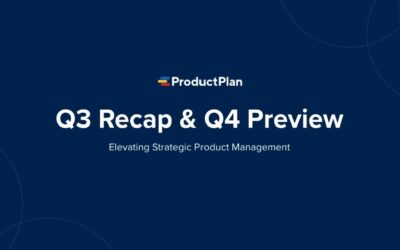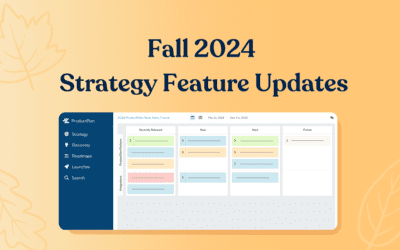What drives product professionals? They are driven with a hyperfocus on doing things that matter. Product professionals talk to customers and stakeholders to understand what’s important to them. They unpack their pain points to get to the root cause. They know the importance of a prioritization strategy and seek out opportunities to improve upon it.
We conduct customer research and stakeholder alignment so we can figure out what matters. Then we identify what we can do in our products that make an impact, be it on the lives of our customers, the growth of the user base, or the bottom line of the business.
However, we usually have far more ideas and options than bandwidth and resources. Thus, we realize a real need for prioritization, ranking and sorting, and culling the list. We can then choose a few items worthy of making the product roadmap rise to the top.
Download the Product Roadmap Kit ➜
The Downsides of Prioritization Frameworks
Because a prioritization strategy is of crucial importance to any product’s success, many different methods exist. Dozens upon dozens of frameworks stand ready for product teams looking for a new way to figure out the best ideas to pursue first, from buy-a-feature to MoSCoW analysis.
These frameworks aim to maximize windows of opportunity and optimize product development. It’s a testament to just how tricky, and complex a prioritization strategy can be.
Not only do these frameworks have lots of different names and acronyms, but they also require varied inputs. Some rely heavily on customer surveys, while others need a well-structured strategy or clear key performance indicators (KPIs).
While these tools often help, there’s an inherent risk to them as well. Product managers may feel forced to ignore critical data points due to the limits of the overall framework.
Product managers face limits due to the lack of a solid strategy. Their strategy should align stakeholders on a consensus moving forward. That must be in place well before plugging numbers into a framework. How else can you assess the significance of any item on the business making progress toward its goals?
IMPACT sets the stage for better prioritization conversations, moving the team past the “why” and focusing on specific trade-offs and expected outcomes.
Watch our webinar on IMPACT:
Applying an IMPACT Prioritization Strategy
As I’ve covered in many other blog posts, webinars, and our free ebook, IMPACT is a mindset for ensuring you’re doing things that matter. And there’s no domain where that matters more than prioritization.
So let’s run through the six elements of IMPACT and see how they relate to this essential aspect of product management:
Interesting
Not all problems are created equal. Framing and Context provide stakeholders with an idea of how pressing the issue is. Product management must act as a storyteller to engage their colleagues instead of just giving a dry recounting of the facts.
Folks get excited and influence how things get ranked. At this stage, the solution must take a backseat to the prevalence and significance of the problem.
Meaningful
The problems you opt to solve must both move the business forward and provide customer value. You can’t do either without an agreed-upon vision and strategy as well as a quantifiable benefit to the customer.
People
The focus must remain squarely on the customers, in this case, how many benefits and how significant is the improvement, which creates an apples-to-apples comparison and shifts distractions and edge cases to the parking lot.
Actionable
Prioritization must consider the realistic chances of solving the problem. Putting something impossible at the top of the queue—despite its possible value—wastes everyone’s time. That requires a little homework with engineering to consider feasibility and level of effort to ensure a balance between resource allocation and weight.
Clear
It’s tough to consider and adequately rank potential development items without a comprehensive understanding of the problem. Don’t prioritize things until the research is complete and the ideal solution is already in hand.
Testable
How will you validate that each prioritized item worked once it ships? Without a measurable definition of success, no one knows if it was worth it or if similar projects warrant resource allocation in the future.
Did you solve the problem? Is the value clear to end-users and prospects? User feedback confirms those assumptions—or sends you back to the drawing board—so the sooner they chime in, the better.
An IMPACT Prioritization Strategy in Action
For an additional lens incorporating IMPACT into a prioritization strategy, you can rank each item being considered based on the six tenets of IMPACT. For each of those six pillars, the team can rate each item on a five-point scale.
When evaluating a potential development item for “People,” for example, it might look like this:
- 1 – This only helps a minimal number of users in our target market.
- 3 – This allows lots of users with a particular characteristic/within a specific market segment.
- 5 – Everyone reaps significant benefits, and it expands the pool of potential customers.
Each item’s IMPACT is an objective countermeasure to the inertia that plague prioritization. The goal is to make the most of each development cycle, and the work with the most significant IMPACT is the work worth doing first.
To learn more about how IMPACT can influence this and other aspects of product management, download the free ebook today!




